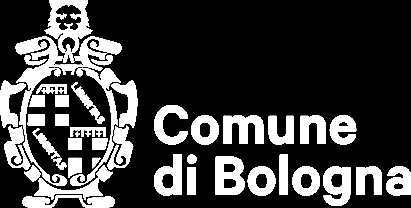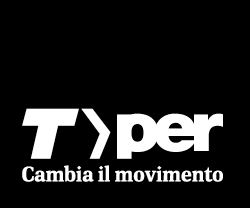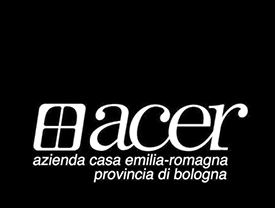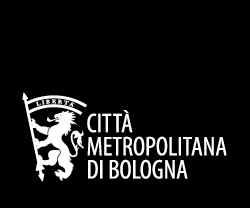In particular, the new system will integrate the railway network with the existing trolleybus network, with completion and expansion works interesting both networks.
The existing trolleybus lines in Bologna are currently line 13, 14 and 32-33.
The project aims to extend the network and transform into trolleybus lines the bus line 12 Corticella – Byron (part of the present line 27); line 25; line 19 east direction towards Pilastro (part of the present line 20) and west direction towards Casteldebole and line 15 Casalecchio (part of the present line 20).
The plan would extend the trolleybus network (up to approx. 125 km) northwards and westwards, connecting it with the railway stops. In addition, some fifty new green trolley buses, called “Emilio”, will be purchased to replace the older ones running on diesel.
The first ones have been running since February 2016.
The new trolleybus network will be accompanied by actions to renew the roads involved, to make them safer and more usable for pedestrians and public transport.
Metropolitan Railway Service
The Metropolitan Railway Service (SFM) is the public transport service on rail to travel inside Bologna and between Bologna and its metropolitan territory.
The goal of the project is to realize new stations both in urban and metropolitan area to complete and boost SFM, and to make the stations more accessible (with renovation works and interventions to connect the stations to city), safer and more livable.
One of the most important interventions planned is the partial burying of the S2 B Bologna-Portomaggiore track line in the city area.
When the entire SFM project will be completed, it will be expected to absorb 25% of the displacements between Bologna and the rest of the metropolitan area and vice versa (approximately 100,000 trips/day on a total of 400,000).
Bologna Junction “Project to enhance the Bologna highway-beltway system”
Società Autostrade per l'Italia is working at the executive project for the Bologna Junction, known as "Passante di Bologna", which will extend the beltway-highway section from the Casalecchio feeder to San Lazzaro, for a total of 13 kilometers. The road section will be widened to accommodate three lanes plus emergency lane in both directions.
The beltway road, instead, will have three lanes plus the emergency lane which will be used as a fourth lane in the busiest stretch.
The project also includes works to re-amalgamate the area to the rest of the city, landscape rehabilitation of the surrounding city areas and environmental inclusion of the new infrastructure.
The project aims to rationalize the distribution of traffic flows on the entire metropolitan road system with the construction of 5 metropolitan roads: Nodo di Rastignano (Rastignano Junction), Lungosavena, Nodo di Funo (Funo Junction), Intermedia, Complanare Nord (north junction road).
Furthermore, the plan includes improvement works for the beltway exits and the completion of important main roads around Bologna.
According to the time schedule of Autostrade per l’Italia, works will start at the end of 2017.
The works are scheduled for completion in the first half of 2021. Openings of extended stretches will be possible for functional reasons since 2019.
People Mover
The People Mover is on its way. This suspended monorail train will connect the central railway station to the Airport "Guglielmo Marconi" in 7 and a half minutes with only one intermediate stop at Lazzaretto, the large residential and university complex currently under construction.
The works for the People Mover started on 31 October 2015 and are scheduled for completion on 31 October 2018 and roll-out by 16 March 2019.
The infrastructure is built by Marconi Express S.p.A., a special purpose joint venture between CCC - Consorzio Cooperative Costruzioni and TPER - Trasporto Passeggeri Emilia-Romagna. The concession will end in 2049.
Cycling (Biciplan)
To make bicycles a more and more viable alternative to cars, both within the city and around Bologna, the local authorities are working to define bike mobility plans and create a complete and integrated system.
In particular, the Municipality of Bologna, with the Urban Center Bologna, has been working on the Biciplan (Bikeplan), the new plan for bike mobility in Bologna. The Biciplan is a planning tool that coordinates interventions on bike mobility to make displacements within and around bologna safer and more pleasant: from the requalification of existing bike lanes to the creation of new bike tracks, from the project for road signs and recognizability of the itineraries to the creation of services and implementation of communication strategies. The Biciplan will help create a detailed list of actions to be implemented in the next years, identifying the priorities and quantifying the necessary resources.
Ciclovia del sole (Sun cycle route)
With regard to sustainable and tourist mobility, Bologna is investing on the “Ciclovia del sole”, the new 300km-long bike path, with 140 km in the Bologna area, connecting Verona and Florence passing through twenty towns in Emilia Romagna between Bologna and Modena.
The route of the Ciclovia del Sole in the metropolitan area runs from Crevalcore - following the recovered land of the decommissioned Bologna-Verona railway line - to Sala Bolognese, continuing on to Bologna using the network of existing trails and secondary roads of the city, then continues along the Reno river valley from Casalecchio to the border with Tuscany.
Sixty-five percent of the path will be independent and 35% will travel on low-traffic roads.
Towards the Urban Plan for Sustainable Mobility
The works described above can be integrated into Bologna's Metropolitan Sustainable Mobility Urban Plan - PUMS, a strategic plan focused on rendering mobility sustainable with a medium-long time horizon, but with checks and monitoring at predefined time intervals.
The basic principles of PUMS are integration, participation, assessment and monitoring. The fundamental strategies are: reducing car use and increasing urban public transport; providing the region with adequate bike paths; an increase in the use of the Metropolitan Railway Service; the strengthening of public transport.
The PUMS framework was approved by the Metropolitan Council in May 2017, approval is expected during 2018.









